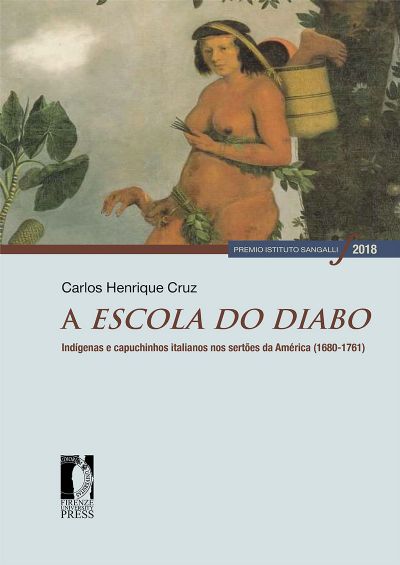The Roman Republic of 1849 is one of the most exciting moment of the heroic season of the Italian Risorgimento, a short adventure in which the contemporaries recognized the opportunity to realize ideals of freedom, tolerance and democracy. This research aims to analyses the role played by religion in the political and social experiment that started in Rome after the pope’s escape, when it was necessary to redefine relations between civil and religious authorities, as well as the role of religion itself in society: a task not at all easy if applied to a State reality, where political and religious powers had been superimposed for centuries, but that will set an inescapable precedent for the subsequent attempts to build a secular State.
Jacopo De Santis
Between altars and barricades
Firenze University Press, Firenze 2020

Ippolito II d’Este (1509-1572), cardinal and prince of Ferrara, played a crucial role in shaping the political and cultural connections between Italy and France. Seen by his contemporaries as staunchly ‘French’, his life rather followed a difficult balance between the political and spatial entities – Rome, Paris, and Ferrara – through which he continuously moved and from which he derived his power. Following his career as cardinal protector of the Valois crown, royal administrator of Siena on behalf of Henry II, and papal legate to France on the eve of the Wars of Religion, this book argues that Ippolito’s apparent diplomatic access ultimately weakened his family’s position in Italy and left it ill-equipped to compete in the changing politics of the peninsula.
Giulia Vidori
The Path of Pleasantness
Firenze University Press, Firenze 2020

The merit ranking of the ‘Sangalli Institute Award for the Religious History 2020’ (two winners)
- Jean Sénié (first award)
- Hugo Martins (second award)
- Flavia Tudini
- Marta Quatrale
- Daniel Toti
- Federica Fiorini – Vincenzo Tedesco
- Francesca Valentina Diana
- Azeta Kola – Davi Chang Ribeiro Lin
- Miriam Benfatto
- Anita Agostini – Andrea Arcuri – Maria Elena Cuenca Rodríguez – Milosav Đjoković
The Committee has judged worth of serious attention all the applications. The selection was managed by asking a detailed referee to the members of the Committee specialist in every single scientific areas. Then, the Committee has fulfilled a second turn of selection, compiling the above quoted merit ranking, gathering together the essays which were comparable for quality and coherence.
The book is about the work done by the Italian Capuchins dealing with the American alterity, especially with the catechization of the indios and the mestizos, accused of having relations with the devil. The friars had to update their missionary methods, facing an alleged indigenous resistance to Christianity and to European social rules. Portuguese colonial sources describe evangelization as a field of dispute among friars, natives and settlers, giving news about the daily conflicts and the changes both in social and symbolic traditions and the management of the missions. The indigenous people were not at all passive subjects in the process of evangelization, because they opposed missionaries for the determination with which, presumably, they practiced their costumes and “gentile” rituals. The documentation contains important information for the study of indigenous people in contact with the Capuchins in the Portuguese colonies of South America.
Carlos Henrique Cruz
A escola do diabo
Firenze University Press, Firenze 2019

The book aims to analyze the hagiographic tradition of the thefts of relics in medieval Italy.
Since the theme of ‘furta sacra’ claims a consolidated historiographical tradition, it was decided to focus on texts and contexts that have not always received due attention in order to enhance its characteristics and affinities.
The heart of the book is concerning the analysis of the furtive translationes, hagiographical tales narrating the transfer of relics from one place to another following a theft. Through the study of historical contexts, narrative dynamics, literary themes and anthropological aspects, the book has tried to focus attention on the richness and complexity of the phenomenon over the centuries, outlining the history of a specific aspect of the cult of saints and relics, which is also history of the medieval culture and the medieval religious imagery.
Marco Papasidero
Translatio Sanctitatis
Firenze University Press, Firenze 2019

